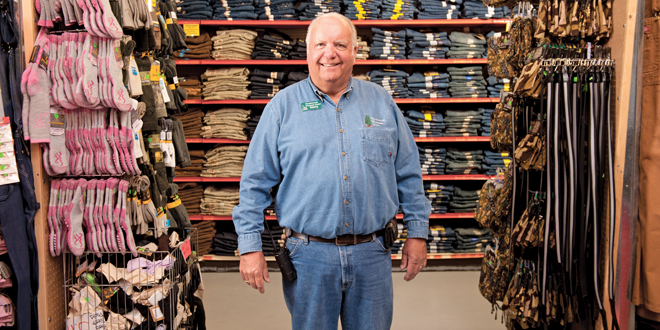To download a PDF of this story, click here. To download the Work Wear Selling Guide, visit hardwareretailing.com/work-wear.
Retailers Share Top Trends and Tips in Clothing and Work Wear
From farmers and fisherman to glammed-up rodeo contestants, consumers across the country are visiting home improvement stores for specific clothing needs. Although it may seem like an unusual pairing, clothing has actually been a part of hardware stores since the 1800s, when general store merchandise included work apparel. Work wear, such as heavy-duty jeans, was considered part of the overall project, making clothing items another tool needed for the job. Over time, clothing has evolved to fit its practical purpose, but with a fashionable flare.
To gain a better understanding of the trends and processes involved in running a successful clothing and work wear department, Hardware Retailing spoke with retailers who offer a wide range of clothing assortments in their stores. These retailers share the importance of understanding their customer base, popular category trends and ways they stay up-to-date with these trends. The retailers we interviewed even offer words of wisdom for readers who are considering adding clothing and work wear to their stores or just expanding upon the category they currently have.
Understanding the Area
Whatever your location, be it rural Wyoming or ocean-side Florida, customers are seeking certain items and following specific trends, which can be identified from an examination of your customer base. For the retailers in this article, discovering what their customers wanted was the first step in creating successful clothing and work wear categories. Below are four retailers we spoke with and an overview of the distinct consumer markets they serve.
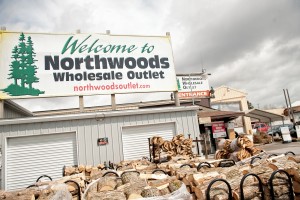 Northwoods Wholesale Outlet
Northwoods Wholesale Outlet
Marty Hornacek, Owner, Pinconning, Michigan
Percent of Store dedicated to Clothing: Roughly 10 percent.
Typical Customer: Outdoors enthusiasts, higher income.
“We are two and a half hours north of Detroit and in the sum- mer, our biggest customers are from Detroit,” says Hornacek. “We do a lot business with the Upper Peninsula as well.”
The store’s dominance in the market leads to a wide range of customers that tend to be higher-income. In addition, Hornacek says about 35 percent of his customers are women.
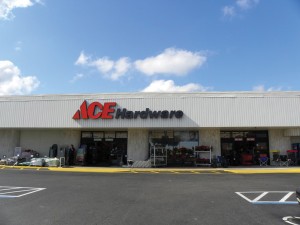 Titusville Ace Hardware
Titusville Ace Hardware
Bill Pastermack, Owner, Titusville, Florida
Percent of Store dedicated to Clothing: About two percent.
Typical Customer: Fishermen, outdoor water enthusiasts.
Pastermack says clothing was so successful that he moved a majority of his store’s apparel to a new, 2,300-square-foot store next door called Go Native, which he owns. Now his Ace store’s clothing inventory is about 2 percent.
“We started selling flip flops, boat shoes and bathing suits, and it got so big that we moved a lot next door,” Pastermack says.
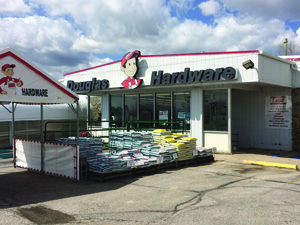 Douglas Hardware Hank
Douglas Hardware Hank
Larry Leake, General Manager, Douglas, Wyoming
Percent of Store dedicated to Clothing: 15 percent.
Typical Customer: Oilfield workers, high school rodeo contestants, 4-H participants, ranchers, business people.
When Leake took over the store six years ago, there wasn’t a broad selection of work wear in town, so he added it to his inventory.
Since then, Tractor Supply has opened a nearby store, and other competitors have increased their inventory. However, a large inventory and distinctive brands differentiate Douglas Hardware Hank from its competitors.
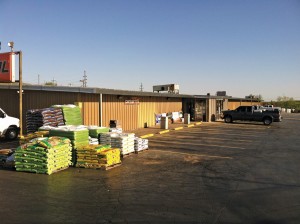 Charlie’s Farm and Home Center
Charlie’s Farm and Home Center
Donna Ryan, Clothing Buyer, Wentzville, Missouri
Percent of Store dedicated to Clothing: 25 percent.
Typical Customer: Farmers, construction workers.
While there is another farm store in town that sells work wear, Ryan says Charlie’s differentiates from that store by ensuring its shelves are always stocked with a variety of sizes.
“Our audience is definitely construction workers, and we have a farming community, but the area has grown,” Ryan says. “It’s about 50-50 for farmers and construction workers and then other customers.”
Staying in Tune
Having an abundance of clothing options requires retailers to be on their A-game when it comes to trends; however, identifying up-andcoming trends is often hit-and-miss.
Many of the retailers Hardware Retailing interviewed say they start by consulting with sales reps and attending buying markets to identify trends, hot products and styles.
“My wife and I order most of the clothing at markets,” Leake says. “We sit down with the sales rep, and they show us the entire clothing line that will be available in stores in six months.”
Buying can then be difficult, because there are multiple pieces in the equation.
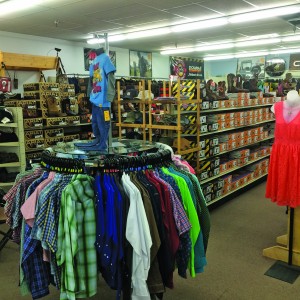
“You see all of the new season’s colors, styles and patterns, and then you have to remember what you have in your store,” Leake says. “You also have to then know and think about what your customers would like.”
In addition, selecting sizes can be tricky since all brands’ sizes vary.
“For certain brands, I go from small to extra large or small to double extra large,” Leake says. “No matter what you do, it’s a gamble.”
Besides visiting its co-op’s show twice a year, Charlie’s Farm & Home Center also looks at clothing trends online. Ryan uses the Internet to identify trends, but with caution.
“I’m very careful what I purchase and look at since there are so many trends out there and since we are located next to a Kohl’s department store,” Ryan says.
Understanding your direct competition is important, but so is considering clothing retailers close by that may not be traditional competitors.
Staying up-to-date on trends for Northwoods Wholesale Outlet is a year-round job.
“We go to hunting and fishing shows nonstop,” Hornacek says. “We do not miss one of them.”
Hornacek says he wrinkles his nose up to some products he sees at shows, but he gets a trustworthy opinion before purchasing.
“We go back to the store and ask the ladies in the office and clothing department for their opinions,” Hornacek says.
While attending shows and browsing the Internet are great tactics for trend-spotting, make sure you’re listening to customers’ requests. Notice what clothes customers are wearing and try to spot hip items, whether it’s the jeans they wear or T-shirts they sport.
Flying Off the Shelves
Popular clothing and work wear items are dependent upon stores’ locations and the demands of the customers.
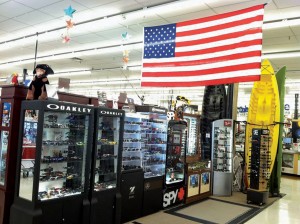
Titusville Ace Hardware sells T-shirts, hats, fishing shirts, sunglasses and other accessories. Pastermack says that in southern Florida, people are buying more long-sleeved shirts to block sun due to the emphasis on skin cancer prevention.
“Lightweight, long-sleeved shirts sell well because people want to keep the sun off of them,” Pastermack says.
At Northwoods Wholesale Outlet, bib overalls, more commonly known as bibs, have been the recent hot product as new innovations are taking place.
“Bibs have changed dramatically since more people are wearing them in hunting and fishing,” Hornacek says. “They prefer material that’s easier to get around in and is breathable.”
Color-wise, duck brown bibs have always been the top sellers, but now, black bibs outsell the brown at Northwoods Wholesale Outlet. Other patterns and color variations are also being integrated into bibs, such as camouflage and bibs with different colors of piping.
“Just in the last five to six years, bibs have changed,” Hornacek says. “They’ve gone from nothing but a work bib to a fashion statement.”
For women’s camouflage colors, pink, purple and snow have taken the lead.
“Pink camo has been the hottest thing in the world for women in the past three years,” Hornacek says. “But snow camo and purple camo are probably now the top two colors for ladies.
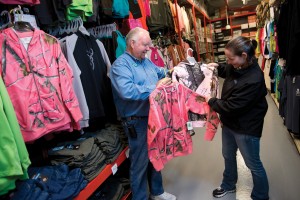
They’re on fire.”
Charlie’s Farm and Home Center also identified the growth in camouflage popularity.
“We do not get into cold weather camo gear for hunting, because we have a BassPro and Cabela’s close by, so we do fashion camo,” Ryan says. “That’s been a trend that has caught me by surprise, and it is everywhere.”
Along with the recent spike in camouflage purchases, Ryan has also noticed a growing trend in western wear.
“We also have cowboy hats and ladies’ cowboy boots that customers purchase for fashion,” Ryan says. “They are a big trend right now.”
Douglas Hardware Hank carries a wide range of clothing, such as fashion jeans, dress slacks, dress boots, work boots, rain jackets, purses, jewelry and more. The store even does business with the local high school rodeo competitors.
“They [rodeo participants] want nice fashion jeans, and they want to wear bright colors,” Leake says. For men’s shirts, he says stripes and plaid are still strong trends.
Besides bibs and camouflage, Hornacek has another product that has sold surprisingly well.
“You cannot believe the amount of diabetic socks we sell,” he says.
He has had diabetic socks for two years, but just last year when he put them on 20 pegs, they sold out and customers loved them.
While trends in western wear and work wear do not come and go as rapidly as high fashion, it is important to know what colors and patterns consumers are currently favoring.
A Pleasant Surprise
Adding trendy items to your clothing department is important, as those items are likely to fly off the shelves, but trends should not comprise your entire department, because a trend is something that is in style only for a certain period of time. Having core clothing items in your inventory, such as everyday work boots, T-shirts and socks, will support your department when trends are changing or when you bought based off of a trend that did not perform well in your store.
Integrating unique items into your merchandise that are not common in the area will also support and differentiate your store.
“We carry John Deere merchandise that sells like crazy,” Ryan says.
At Northwoods Wholesale Outlet, a product line that has surprised Hornacek with its success is an assortment of women’s lingerie featuring camouflage patterns.
“You cannot believe the growth we’ve had in that category,” Hornacek says. “We thought, ‘Boy, this is a stretch to put it in the store,’ but we tried it and have expanded the rack three times now.”
In addition, the lingerie brand also makes swimsuits, which are popular sellers in the summer.
“In the summer time, we can’t keep the swimsuits on the rack,” Hornacek says.
Another product that does well at Northwoods Wholesale Outlet is its branded clothing.
“The No. 1 underestimated thing in retail is having your own branded clothing,” Hornacek says. “People don’t understand how much clothing you can sell with your name on it—it’s just gigantic business.”
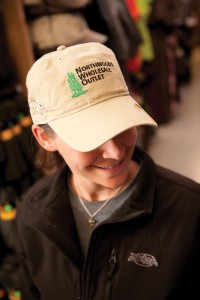 Taking a page from BassPro and Cabela’s, Northwoods now has about 50 items with “Northwoods Wholesale Outlet” on them.
Taking a page from BassPro and Cabela’s, Northwoods now has about 50 items with “Northwoods Wholesale Outlet” on them.
“People are proud to wear the name of your business, if you do it tastefully,” Hornacek says.
At Douglas Hardware Hank, ladies’ fashion jeans are some of the most unique products, Leake says. These jeans are higher-end and tend to have decorative elements on the back pockets. Besides fashion jeans, Douglas Hardware Hank is unique because of the wide variety it offers.
“Just in ladies’ jeans, I probably have about 30 different styles,” Leake says.
At Titusville Ace Hardware, a local manufacturer’s T-shirts sell really well, however, Pastermack says he finds uniqueness through variety.
“I don’t know if anything I sell is really unique, it’s just that I have an expansive selection,” Pastermack says. “I don’t know if BassPro would have the selection of T-shirts that I do.”
Set up to Sell
Selling clothing is a different process than selling hardware. Customers need the right style and size. They need to try the product on. Their decision for color, fit and look are all based on opinion, not practicality. Therefore, merchandising and selling techniques in this category can vary from other categories.
Dressing rooms are a common denominator in stores that have substantial clothing departments. If a store offers a variety of jeans, few will be sold if there is no place for customers to try them on.
The selling process for clothing is a more personalized experience than in other areas of the store, Ryan says.
“A lot of times, you have to be available to help customers with sizes when they’re not sure what they need,” Ryan says. “Sometimes you have to run to the warehouse to get a different size.”
With running back and forth to help customers find different styles and sizes, a willingness to help is key.
“Patience is one of the first virtues of selling anything,” Leake says. “With clothing, you really need to know what you have because what you personally wear may not be what the next 20 ladies who come in would wear.”
Displaying clothes on mannequins is a great way to highlight a certain product and gain customers’ attention. Leake says having an eye for color and changing the mannequins often helps sell products.
“I’ve got mannequins all over—men, women, children—and they get changed every couple of weeks,” Leake says. “If I put anything on a mannequin, though, I have to make sure I have plenty of that clothing in stock.”
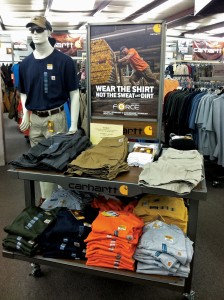
outfits, including accessories such as belts, hats and sunglasses.
Ensuring clothing is easy to shop is important, too. Customers want to see the front of the item and not have to wrestle a rack jam-packed with merchandise.
“When you hang clothing on the rack, sometimes you try to get as many pieces as you can on it, but then you can’t see what it is,” Hornacek says. He suggests putting some of the clothing facing out, so customers can see what the shirt looks like while still keeping plenty of inventory on the floor.
Getting Your Name Out There
Distinguishing your product mix from area competitors is important in all categories. Your store should provide consumers something they cannot find elsewhere. However, it is up to you to make consumers aware of this key differentiator.
Northwoods Wholesale Outlet takes advertising very seriously and uses flyers, billboards, television commercials and radio promotions to communicate with consumers the great products and items the store carries.
“We have 39 billboards on our highways, and that has really grown our business a lot,” Hornacek says. “We are a destination store, so people drive many miles to come here.”
Besides billboards, radio giveaways are a platform Hornacek has invested in as well.
“We do a lot of radio giveaways, anything from a camping package, a Mother’s Day giveaway or Christmas makeovers, and all with different stations,” he says. “I even do morning radio shows once in a while with local DJs.”
Douglas Hardware Hank offers promotions as well, but its main draw is being a corporate sponsor.
“We’re a big sponsor of the local high school rodeo, so I sell a lot of products to them,” Leake says.
The store also gets a lot of clothing business from the 4-H and Future Farmers of America members, since the participants want to look good when they are in the ring or showing off animals.
As part of the sponsorships for these groups, Douglas Hardware Hank supplies belt buckles for the high school rodeo and the county fair, and Leake even helps design them.
“We’re a corporate sponsor of the Wyoming Rodeo Queen contest, so during the state fair, contestants come in to our store and spend the day signing autographs, taking pictures and conducting interviews,” Leake says.
He has invested a lot of time in these sponsorships and drawing in the younger crowd.
Integrating Clothing into Your Store
Bringing clothing items into your store requires planning and recognizing a need in the community.
All the retailers Hardware Retailing spoke with recommend checking out the competition and what items they carry.
“Fill the niche your competition is not addressing,” Leake says.
Ryan of Charlie’s Farm and Home Center says having items in stock is key, since customers are there to buy.
“When a consumer comes in to buy new boots or bibs, they want to buy it then and there, so it’s very important to have it stocked,” she says.
Price is also another important factor when adding clothing to your store, due to competitive pricing tactics by other operations, like Wal-Mart and Menards.
“Other retailers’ prices are too high, and they are trying to get too much out of clothing,” Leake says. “You have to be right on your prices or you’re not going to sell.”
Leake also says that when customers buy clothing, they usually buy more than one item, so you may not get a huge margin off of one sweatshirt, but after they purchase a hat and socks, it adds up.
To keep a good price image and provide multiple options, Leake also recommends carrying lower-priced items.
“You want to have one pair of jeans that you sell for $15 to $25 so you can match Wal-Mart,” Leake says. “That one product may make your whole category look great.”
Pastermack recommends looking at popular activities in the area and to make sure you, as the owner, are excited about the product.
“If you are passionate about it, as the owner, you can make it work,” Pastermack says. “I’m an avid fisherman and boater, and I’m passionate about what I sell.”
 Hardware Retailing The Industry's Source for Insights and Information
Hardware Retailing The Industry's Source for Insights and Information



